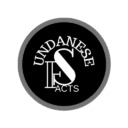Exploring Creative Beauty: Batik and Pottery
Indramayu’s , a regency in West Java, Indonesia, is celebrated for its rich artistic traditions, particularly in batik and pottery. Originating from Dermayu Village, Indramayu’s cultural diversity is shaped by influences from traders and settlers from Bugis, Aceh, Central Java, East Java, Cirebon, and China. This blend of cultures has left a lasting mark on the region’s art and crafts. Indramayu’s batik is known for its vibrant, flowing patterns that feature geometric designs, flora, fauna, and even Chinese-inspired motifs like the phoenix. Meanwhile, pottery in Indramayu produces functional items, such as water jars and cooking vessels, often adorned with simple decorative lines.
Explore Dermayu Village: A Melting Pot of Cultures!
Dermayu Village, the historical heart of Indramayu Regency, serves as a foundation for its rich cultural diversity. Positioned near the mouth of the Cimanuk River, it became a trading crossroads for merchants from Bugis, Aceh, Central Java, East Java, Cirebon, and China. This vibrant exchange has significantly influenced the local way of life, especially in arts and crafts.
Central and East Java, in particular, have left their strongest marks on agricultural practices in the region. Meanwhile, Cirebon’s integration into the Cirebon Sultanate in 1615 added a unique flavor to the cultural landscape east of the Cimanuk River, shaping Indramayu’s artistic expression.
Additionally, the “Nadran” ceremony highlights the local fishermen’s traditions, celebrated every November. During this event, small boats carrying offerings are released into the sea, creating a captivating spectacle that showcases the community’s gratitude and reinforces its cultural identity. Thus, Dermayu embodies the rich tapestry of multicultural influences in Indramayu.

Discover Indramayu’s Batik and Pottery: A Cultural Treasure!
Batik, Indonesia’s iconic art form, thrives in Indramayu, showcasing unique designs that embody the region’s creativity. The batik features geometric motifs, calligraphy, flora, and fauna, alongside influences from Chinese culture, such as phoenixes and fans. These free-flowing, painterly designs reflect the artistic spirit of Indramayu’s people.
In addition to batik, pottery holds a special place in Indramayu’s cultural legacy. Local artisans produce functional items like rice pots, cooking vessels, mortars, water jars, serabi molds, piggy banks, and flower pots. Simple decorative motifs, often consisting of lines, enhance the beauty of these everyday objects.
Together, batik and pottery not only serve practical purposes but also represent the rich identity of Indramayu. By preserving these ancestral crafts, the people contribute significantly to Indonesia’s diverse cultural wealth. Ultimately, these artistic expressions are a testament to the region’s heritage and creativity, enriching both local and national identities.

Indramayu’s Batik and Pottery: Symbols of Cultural Heritage
References:
As a reliable source of information, this article draws on a variety of references from both books and academic journals. These sources provide well-researched and credible insights, ensuring that the content presented is accurate and supported by established scholarly materials.
Here are the references from the article above.
- Adriati, I. (2004). Perahu Sunda: Kajian Hiasan pada Perahu Nelayan di Pantai Utara dan Pantai Selatan Jawa Barat. Bandung: PT Kiblat Buku Utama.
- Handayani, S. (2019). Indramayu Batik: An Artistic and Cultural Legacy. Jakarta: Indonesia Heritage Foundation.
- Subekti, D. (2017). “Cultural Influences on the Development of Pottery in Indramayu.” Journal of Indonesian Craft and Culture, 12(3), 34-45.
- Setiawan, A. (2020). “The Role of Nadran Ceremony in the Fishermen’s Life of Indramayu.” Cultural Studies Review Indonesia, 5(2), 56-68.
- Kuntowijoyo. (2006). Budaya dan Sejarah Indramayu: Pengaruh Cina, Jawa, dan Islam. Yogyakarta: Gadjah Mada University Press.
- Yuliani, T. (2015). “The Evolution of Indonesian Batik Patterns: A Study of Cultural Exchange.” Asian Art and Culture Journal, 8(1), 79-90.
Read More Article Muara Jati: Origins and Cultural Heritage of Cirebon City








2 comments